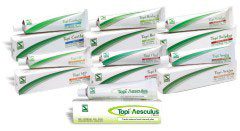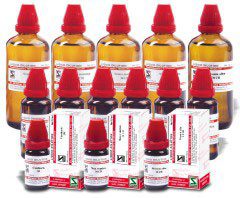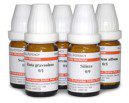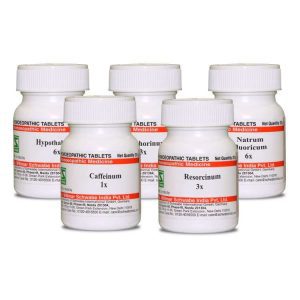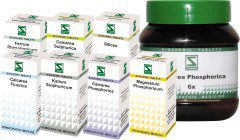Doctors Zone
Journal (JEBH)
Alpha™- Liv Drops
Alpha – Liv Drops Due to high demand from the market, for a formulation in drops for the liver, apart from the syrup already available in the market, Schwabe India developed this product. Introduction The liver plays a key role in metabolism. It has anabolic and catabolic, exocrine and endocrine functions. The liver is a blood reservoir, filter and store of different substances (e.g. glycogen, vitamins). It is the site of serum protein (e.g. albumin, prothrombin, fibrinogen) and enzyme synthesis. Metabolic processes (e.g. bilirubin, hormone, carbohydrate and lipid turnover) and the removal of toxic products are important liver functions. 1 Hepatotoxins (e.g. alcohol, tetracycline, acetaminophen, fungal toxins, and anabolic steroids) can cause specific damage to liver cells. Toxic hepatitis may be clinically silent or severe enough to lead to the rapid development of hepatic failure. Clinical features include hepatomegaly, enzyme abnormalities, fever, abdominal pain, anorexia, nausea, vomiting and weight loss. In patients with underlying cirrhosis, manifestations of portal hypertension may predominate. Aversion to fatty food, abdominal discomfort, nausea and vomiting after meals may be symptoms of 2 cholelithiasis. Jaundice results from accumulation of bilirubin. It has non-hepatic as well as hepatic causes. Hyperbilirubinaemia may be due to abnormalities in the 3 formation, transport, metabolism or excretion of bilirubin. TM Alpha -Liv Drops aids recovery and normalisation of liver functions. Severe liver disease needs specialised treatment. Indications: Slow liver functions, fatty liver, and for supportive treatment of hepatocellular jaundice and toxic liver damage.

Adlumia fungosa – Schwabe News Jan – Jun 2020
Adlumia fungosa
The climbing plant, which in its second year reaches a height of up to 3 metres, has slender stems bearing alternate, petiolate 3- imparipinnate leaves. The leaflets are delicate, elliptical or obovate with deep cut lobes and dentate margins and generally 1-2cm long and 5-10 mm wide. From the lower to the upper part of the stem, the leaflets are progressively transformed into tendrils. The plant contains alkaloids, the D-Adlumin & the Adlumin of the group of phthalidiso-chinoleine alkaloids. They are physiologically active and are present in the different parts of the plant.
A homoeopathic tincture is made from the aerial parts (whole plant), which is imported. It is covered by both Homoeopathic Pharmacopoiea of India and German Homoeopathic Pharmacopoeia.
In homoeopathy, it is used in gout, migraine, dyspepsia with flatulence, gastro-duodenal ulcer, diaphragmetic hernia, rectitis and pruritis, hepatitis, cervical arthrosis and hyperurecemia. It is also indicated for absentmindedness, irritability with diminish sexual desires with quick ejaculation. Literature also suggests its use in insomnia and early menses.
Caution: Ø/1x in drop doses in cases of hyper-urecemia under medical supervision only.
Recommended dose: Q/1X and higher.10-20 drops.
References:
-
F. Schroyens, Synthesis Treasure Edition 2009V, RadarOpus 1.33, Archibel S.A. Rue Fontaine St. Pierre 1E, Zoning Industriel de la Fagne, 5330 Assesse, Belgium.
-
Dr. P. N. Varma, KusumYadav, Ramachandran Valavan, A Compendium of Rare and Clinically Established Mother Tinctures, 4th Edition, Dr. Willmar Schwabe India Pvt. Ltd., A-36, Sector 60, Noida
Recent Advancements in Basic Homeopathic Research – A Reporton Two Significant Publications
Author: Snigdha Suman Dalua , Praveen Kumar Singh In a study conducted at the Experimental Farm of the State University of Santa Catarina, Brazil, researchers investigated the impact of homeopathic treatments on piglets during the nursery phase. The study aimed to determine whether homeopathic agents could reduce fighting behavior, improve growth performance, and affect hematological, metabolic, and oxidative variables.
Journal of Evidence Based Homeopathy Volume: 1, Issue: 1, January - June 2023
Comprehensive articles

Agrohomeopathy – A Review
Short cases

Unmasking the Intricacies: A Pyogenic Abscess Case Report

Lichen Simplex: A Singular Case Study

Ranula Unveiled: A Case Report and Management Approach

Lichen Simplex: A Singular Case Study

A Puzzling Presentation: A Case Report of Jaundice
Recent provings and updated materia medica

Acidum Formicum

Mygale

Thea Chinensis
Materia medica on phytohomeopathy

Chrysarobinum

Sanguinarinum nitricum

Thiosinaminum
Mother tincture

Asparagus Officinalis

Ginkgo Biloba

Rosmarinus Officinalis
Product watch

Alpha™- Liv Drops

Good Morning™ Constipation Drops

Zauber™ Hair Drops
Research News

















